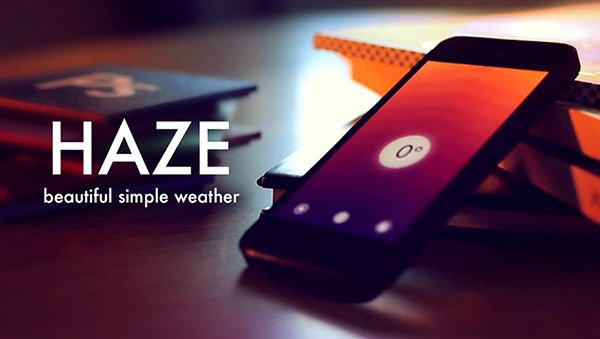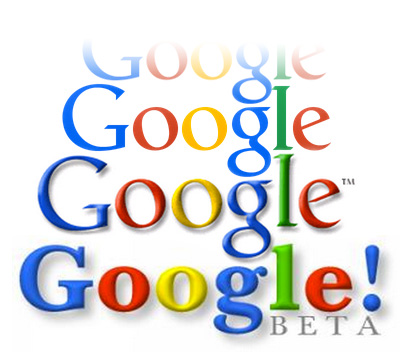Google’s Aesthetic Turn: One Simple Beautiful Useful Google
As tech blogs circulate lists of not just the most popular apps, nor merely the best, but the most beautiful, stunning, and even “drop dead gorgeous,” it seems an apt time to consider how cultural studies’ concern for aesthetics might inspire more critical engagement with the experiences and artifacts of digital culture.

Everyday life is so awash in explicitly aesthetic appeals (ie, “the most beautiful way to check weather”) that I can instantly imagine an eye-catching infograph that helpfully orders app attributes as values of sensuous desire. We might need to revise Susan Sontag’s famous call for an erotics of art: “in place of a hermeneutics, we need an erotics of apps!”
How does the technocultural installation of some “gorgeous” layer between internet users and the cycles of life (e.g., sleep, fertility, seasonal, fiscal) shape the way we come to experience and know the world? And of course, what is “beautiful” anyway? Who gets to define what it looks and feels like? These are questions of aesthetics, though not in the classical sense of pondering the philosophical problems of beauty and art. Once assumed to correspond with universal human values, perceptions of beauty have since been understood as mediated by taste, class, and racial and gendered cultural hierarchies that govern legitimacy. Cultural studies expanded the field of what counted as “aesthetic” by turning from high art to the literature and popular culture of the working classes. As Raymond Williams puts it, “Culture is ordinary.” How might we probe what’s at stake in the digital beautification of everyday life? In this post, I examine the ambitious 2011 redesign of top global website, Google (Google+, Google Search, Maps, etc.)
Google’s First Aesthetic: Transparency
Built from the start with users in mind (mantra: “focus on the user and all else will follow”), the early Google Aesthetic presents simplicity, technology, usability, and engineering as a form of transparency. When the stark white Google search was introduced in 1998, it must have seemed positively un-designed compared with the bloated portals of the time. No, Google cut the crap by delivering nothing but fast, relevant search results. For a decade, using Google Search was kind of like using a calculator, which is to say, you just used it and expected it to work. With its famous suite of PageRank algorithms under lock and key, Google balanced its technical opacity with a transparent communication style that emphasized openness, accountability, informality, and playfulness, all of which felt algorithmically generated but human-inflected. This aesthetic of transparency isn’t confined to the giant white home page, of course. We catch another glimpse if we approach material like Matt Cutts’s “How Search Works” as an aesthetic performance as much as an instructional one.
There are plenty of advanced technologies here, but the tech layer is mediated through a veneer of “(expert guy)” friendliness: approachable, direct, playful, and above all, crystal clear. From the expansive white space to the affable sketchy wireframes, this Google Aesthetic is presented with such ease that we’re not meant to question this explanation (or indeed, understand this as an aesthetic) at all. Of course, transparency equally conceals the white dudes’ in casualware who serve as interfaces to certain visions of computing. Ensconced in white space and doodles, Cutts becomes an aesthetic expression of what Siva Vaidhyanathan calls Google’s culture of Aptocracy, a world that rewards merit based on technical competence and quantifiable forms of achievement.
Google’s Aesthetic Turn: The OSbug
Google’s engineering-centric culture had a long reputation for downplaying design in favor of speed and efficiency. Who cares about beauty when your computer is a hulking beige box? But there’s a huge industry surrounding tablets and smart phones, now marketed as aesthetic objects aligned symbolically with gourmet chocolate, fine jewelry or luxury cars. Google was simplicity, technology, usability, engineering… but not beauty.
When Larry Page became Google CEO in April of 2011, he immediately made design Google’s top priority with the mantra: “One simple, beautiful, useful Google” (the “OSbug” for short). For the first time, Google set out to design and engineer a cohesive aesthetic experience that would unify the “look and feel” of the Google universe. It’s worth noting, then, that in the pursuit of “beautiful” interaction, Google designers were drawing inspiration not from the realm of the visual, but from the legacy of “ubiquitous computing” (ubicom) and the aesthetics of invisibility and seamlessness that were a hallmark of that vision.
Designers’ were asked what beauty means to Google and concluded it “involved the idea of simplicity, and deeper than that, of invisibility.” For ChromeCast users, for example, “the beauty comes from the fact that it delights you and you don’t see it.” This disappearing act represents a downgrading of the primacy of the visual in favor of haptics, feedback, sound, navigational cues, etc., that work to create a cohesive sensation of a unified space (the OSbug). The shift to seamlessness or “invisibility” is not necessarily a bad thing: who wants to feel frustrated by devices and interfaces? But seamless is a double-edged sword. UX designers are thinking carefully about how users are embedded not just in the apps we use, but complex social framework of daily activity.
But it also raises some crucial questions: if we can no longer feel the seams, do we risk becoming so comfortable in our skin that “beautiful” layers between us and the world begin to seem more and more like common sense? How might different users feel oriented (or disoriented) within information space? What kind of gendered or racial assumptions might “beautiful” interaction uphold or challenge? Whose needs and desires are being optimized by this particular expression of “beauty”?
This is the fifth post in Antenna’s new series The Aesthetic Turn, which examines questions of cultural studies and media aesthetics. If you missed any of the earlier posts in the series, they can be read here. Look out for regular posts in the series (most) every other Wednesday in January and beyond.




Thanks for this thoughtful post, which seems to take the AT series in an intriguing direction. Your point that haptic sensations and interactive experiences (“feedback” and “navigational”) qualify as “aesthetic” seems entirely obvious when stated, but my thinking about aesthetics runs so much toward the visual and aural that the observation made me pause.
I am generally unfamiliar with scholarship on gaming, programming, and digital media. Are you aware of any work dealing with the “poetics of programming” or the “poetics of interactivity”?
Hi Leo, Thanks for your comment. I believe there is quite a bit of work now that examines digital and computational aesthetics from the perspective of new media art and programming. A few that come to mind:
Johanna Drucker’s SpecLab, Anna Munster’s Materializing New Media, Victoria Vesna’s Database Aesthetics, and I’ve recently seen (but haven’t read) Katja Kwastek’s Aesthetics of Interaction in Digital Art and Paul Fishwick’s Aesthetic Computing.
But as far as I know, there’s less work out there that considers digital aesthetics in the context of media and popular culture. James Bennett and Niki’s Strange’s book Television As Digital Media has a section on the aesthetics of convergence. Dan Chamberlain’s chapter does a nice job discussing media interfaces and the aesthetics of metadata.